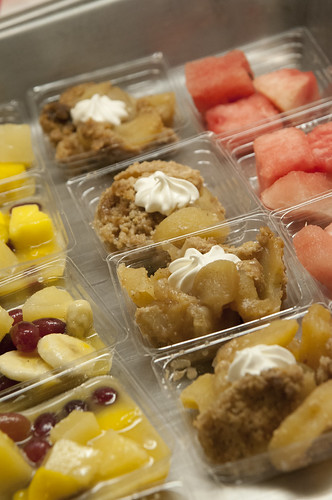
USDA recently announced its “Smart Snacks in School” proposal that will help to ensure all foods and beverages sold in schools contribute to a healthy diet. The proposal offers a common sense approach to healthy eating by promoting the availability of snack foods with whole grains, low-fat dairy, fruits, vegetables or protein foods as their main ingredients, while preserving time-honored school traditions like occasional bake sales and birthday treats.
Parents and teachers work hard to instill healthy habits, and our proposal reinforces that hard work by ensuring that kids are offered only tasty, nutritious food options at school. Thanks to the Healthy, Hunger-Free Kids Act of 2010, this year students across the country began getting healthier school meals with more fruits and vegetables, whole grains, and low-fat dairy based on scientific recommendations for nutrition. Through the Act, Congress also directed USDA to set nutrition standards for all foods sold in schools, including vending machines, school snack bars and a la carte, as a complement to the new, healthy standards for breakfast and lunch.
We responded by carefully reviewing expert recommendations from sources such as the Institute of Medicine and the 2010 Dietary Guidelines for Americans; talking to parents, teachers, and nutrition and health professionals; and taking stock of the good work already taking place across the country. Tens of thousands of schools are already moving in this direction through voluntary initiatives like the Alliance for a Healthier Generation (AHG) and USDA’s HealthierUS Schools Challenge. USDA used the AHG nutritional baseline as a model in developing these new standards.

The intent of the proposed standards is not to limit popular snack items, but instead to provide snack foods for students that are healthier. For example, chips would still be allowed, in healthier versions such as baked tortilla chips, reduced-fat corn chips, and baked potato chips. Many products being sold in schools already meet the proposed standards or are very close to these standards, and the rule allows for a transition time for schools and the food industry to make the necessary adjustments to the school food environment.
To help folks gain a better understanding of how this proposal would change snacks sold in schools we put together this factsheet and a series of frequently asked questions with information about the proposed rule. The comment period for the proposal is open for 60 days. We encourage you to read the proposed rule and provide feedback and comments at regulations.gov (direct link).
